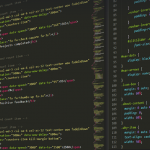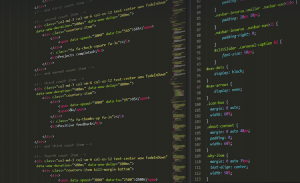Understanding the Basics of a Killer Research Paper
So, you’ve decided to dive into the fascinating world of criminal justice research! You want to write a killer paper that leaves your professor (and everyone else in your class) impressed. But where do we even start?
First things first: a good research paper is all about exploration and knowledge-sharing. It’s about digging deep into the complexities of criminal justice issues like the prison system, the justice process, or social impact on crime. Think of it as uncovering those hidden truths behind “why” these societal issues exist.
But don’t worry! You don’t have to be an expert from day one. A good research paper uses solid sources like academic journals, reports from reputable organizations, and even personal interviews.
The key is finding a compelling question to ignite your passion for the topic you choose. Instead of just reading about things in textbooks, create questions that force you to go beyond surface level thinking! What are some unanswered questions around the criminal justice system? How can we improve social security programs and tackle crime rates simultaneously?
Crafting a research paper is like building a puzzle. You need the right pieces—research, evidence, your analysis, and your own unique perspective—to assemble something truly impactful.
Once you’ve got that initial spark of an idea, let’s get into the nitty-gritty:
The Building Blocks of a Killer Research Paper
Every good research paper has its essential ingredients. Think of these as your building blocks:
- Research Question/Problem Statement: This is where you lay out the very foundation of your study. It will guide your entire writing process and ensure you’re exploring a specific area of interest.
- Literature Review: This part dives into existing research on your chosen topic. You’ll need to read, analyze, and understand what has already been discovered about the subject.
- Methodology: How exactly are you going to conduct your research? Your methodology should be clear and specific; this section outlines the methods you’ve used to gather data, like surveys, interviews, or historical analysis.
- Data Analysis: Now for the fun part! This is where you dive into the numbers, charts, and raw data you’ve collected. You will use statistical methods to interpret your findings and answer your research question.
- Discussion and Conclusion: Here’s where you draw conclusions from your research. Your analysis should highlight the most important takeaways, explain their significance, and connect them back to your initial research question.
Remember, a solid conclusion is like the cherry on top of your research cake! It leaves your readers with something to ponder and encourages further exploration of the topic.
Crafting Your Research Paper: A Step-by-Step Guide
Okay, now let’s talk about the actual writing process.
**1. Research & Planning:**
This is where you start brainstorming! Get your mind spinning with ideas related to the topic of your research paper, and start creating a list of potential questions. Then, delve into reputable sources to find answers to those questions.
**2. Structure & Outline:**
You want your paper to be cohesive? A good outline is the key! Divide your research paper into distinct sections—a problem statement in the introduction, followed by a literature review exploring existing theories, a methodology section detailing your chosen approach, and then analysis. Your conclusion should offer a final summary.
**3. Writing & Research Summary:**
This is where you put it all together in the form of written words. Use clear, concise language to present your ideas. Don’t be afraid to use quotes from other researchers to add credibility and support your arguments.
**4. Proofreading & Editing:**
It’s a crucial step that often gets overlooked! Take a break from the work before you finalize it, revise, proofread for errors, ensure proper formatting, and get an unbiased opinion on your paper from someone else.
Don’t Forget: Show Off Your Skills
As you’re putting together your final draft of that research paper, don’t forget to showcase your skills!
**1. Style & Writing:**
The language used in your paper should be formal and professional yet engaging. Use clear and concise sentences; avoid jargon whenever possible!
**2. Citations:**
Accurate citations are essential! Cite all your sources properly using a consistent style (such as APA or MLA). This ensures you’re giving credit where it’s due and strengthens the credibility of your research paper.
**3. Visual Aids:**
You can engage readers with visuals like charts, graphs, and other relevant images to help illustrate your points and make your arguments more compelling.
**4. Final Touches:**
Make sure you have a title that grabs the reader’s attention, but also reflects the research paper’s content. This will help readers understand what your paper is about on their first read. Ensure proper formatting with headers, subheaders, and consistent spacing to make reading easier.
**5. Revision & Feedback:**
Don’t be afraid to ask for feedback! A fresh perspective can often lead to improvements. You can get an unbiased opinion from a trusted friend or colleague who can offer constructive criticism that will help refine your research paper for optimal impact.









